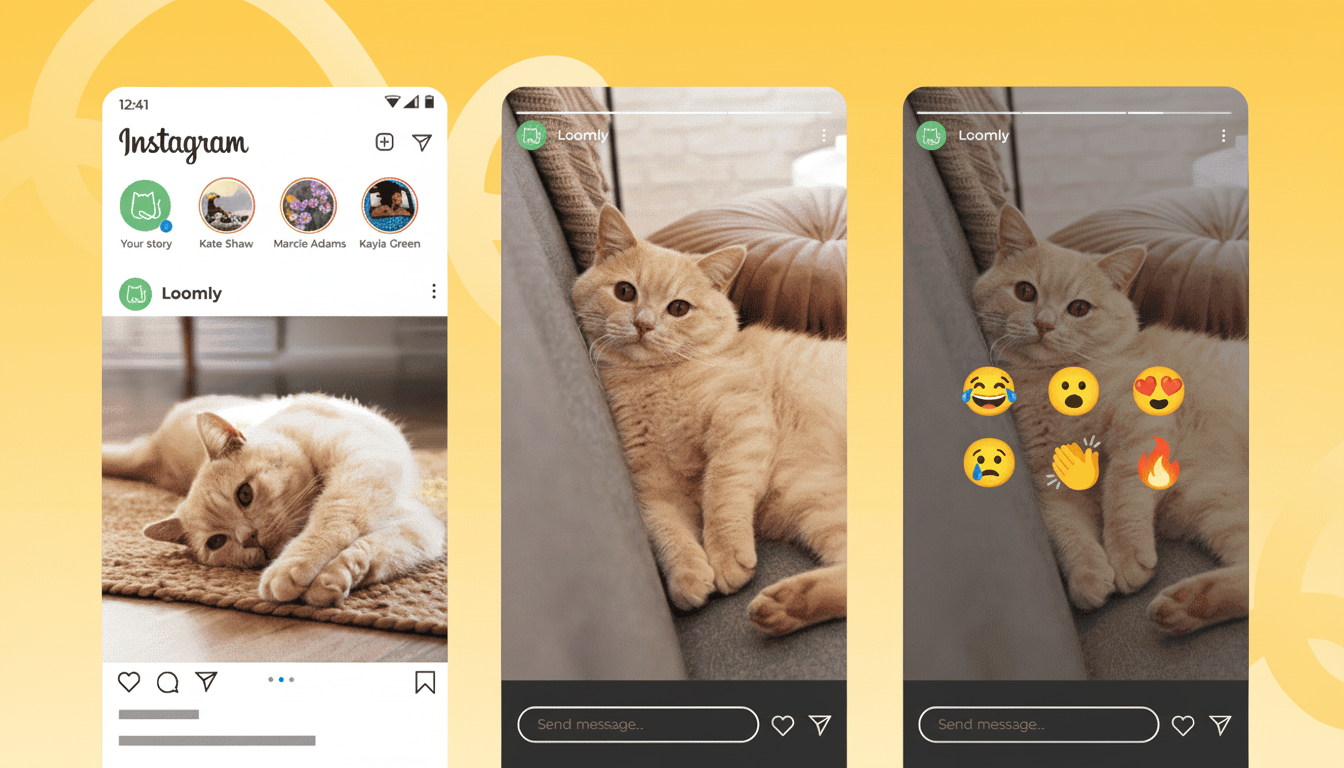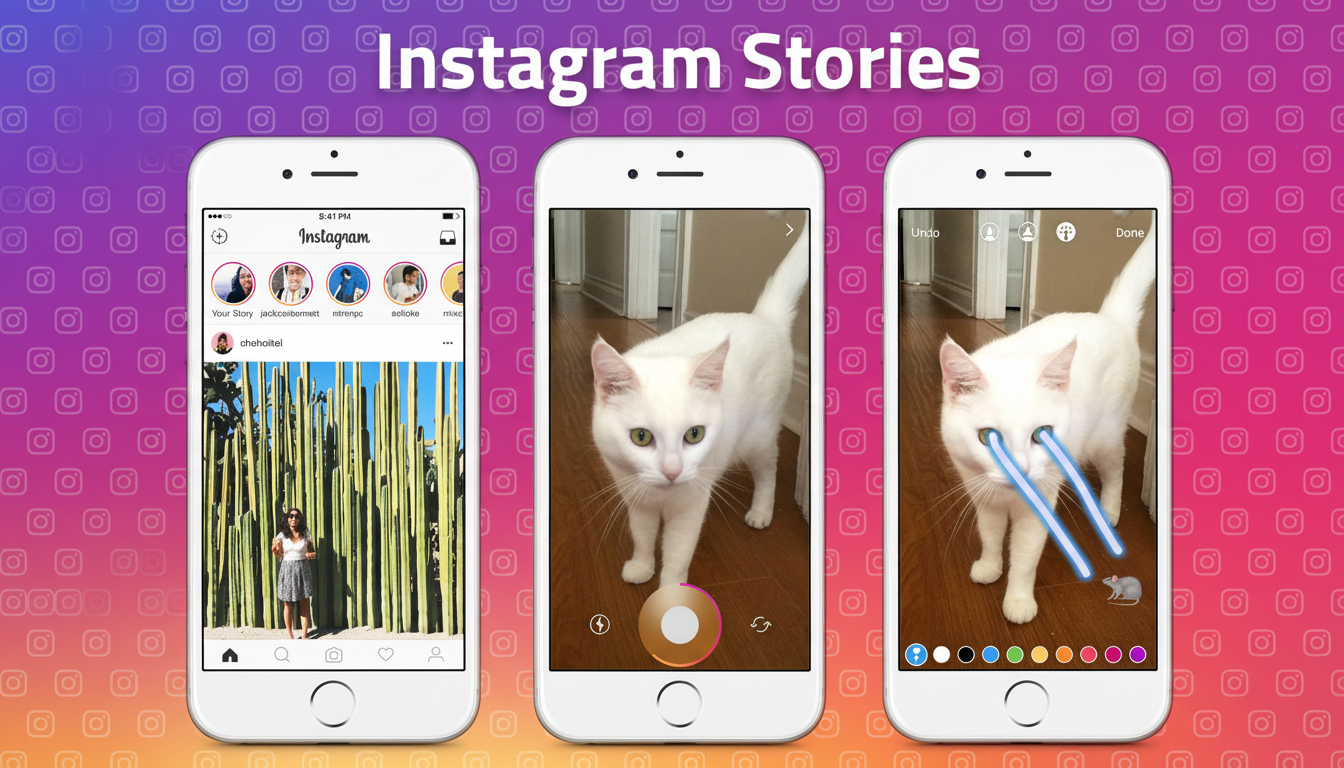Instagram is integrating generative AI in Stories: the app’s new prompt-driven editing can remove objects, restyle a scene or even add to it all on the fly. The update brings Meta’s AI models to the Stories composer, hoping to make more complex edits as easy to perform as typing a few words.
What the new AI editing tools in Instagram Stories can do
The new Restyle tools allow you to ask Meta AI to change a photo or video’s subject, lighting and mood, composition, style or location — five aspects of videos and photos that Meta says result in the best variations. Think “make it golden hour” or “turn this into watercolor” or “move the subject closer and blur the background.”
- What the new AI editing tools in Instagram Stories can do
- How to use Restyle in Instagram Stories step by step
- Why this update matters for creators, small businesses and brands
- How Instagram’s Restyle compares with rival AI editing tools
- Guardrails, labels and privacy around AI-generated edits
- Rollout timeline for Restyle in Instagram Stories and what to expect

One of the generative gestures in Restyle is a Remove option that feels very much like Google’s Magic Eraser: tell the AI to “remove these people,” “delete the car,” or “clean up that mess of power lines” and it tries a clean, context-aware fill. You can go the other way with Add or Change, which can adjust hair color, change that outfit or insert props — balloons for a birthday scenario, perhaps — all while maintaining overall scene coherence.
For easy conversions, Instagram offers preset styles that operate as super-boosted filters. The early examples range from Sketch, 8-bit and Pink through Manga, Illustrated and Watercolor to Anime, reworking textures and color palettes rather than just slapping a tint on things.
How to use Restyle in Instagram Stories step by step
To start when posting to your Stories, tap the brush in one of the corners then select Restyle. You can type a prompt in natural language, select one of the presets, or tap Remove to target unwanted components. Edits preview inline so you can iterate quickly — tweak the prompt, stack a preset, then dial in Add or Change until it matches your vision.
Rather than leave things up to a designer’s interpretation, Meta suggests you be specific: tell us what we’re looking at; decide the mood and lighting (soft studio? neon nightlife?); dictate the composition (close-up vs. wide); pick a style (film grain, comic, watercolor); and even if it makes sense in your head, tell us where this is happening (“Can you make it look like a beach boardwalk?”). The closer to Earth’s surface, the less the variation in direction.
Why this update matters for creators, small businesses and brands
Stories are among Instagram’s stickiest surfaces — the company has said that hundreds of millions of people now post or view Stories each day, and it is a staple for creators, small businesses and brands. Integrating AI editing into the composer also trims production time and reduces the skill bar for crisp visuals that you used to need pro tools to achieve.
For social teams, this might expedite ad hoc asset cleanup — say, removing a stray logo or tidying up an untidy background or matching the visual mood of a campaign in seconds. Look for speedier A/B testing of creative, more frequent refreshes of evergreen assets and an uptick in what Ms. Mintz called “playful polish,” which makes Stories seem as spontaneous as they are intentional.

How Instagram’s Restyle compares with rival AI editing tools
Object removal and generative fill are nothing new to imaging — Adobe’s Generative Remove in Lightroom and Photoshop’s Generative Fill, not to mention Google’s Magic Eraser, bear witness to the demand. Here, the distinction is one of immediacy: Instagram’s features live where content is captured and posted, with prompt-led controls that feel native to social workflows rather than post-production suites.
AR-forward creativity was popularized by Snapchat with Lenses, and TikTok relies heavily on templates and effects; Instagram’s Restyle aims squarely at AI-informed image editing to meet creators who still need precision edits without exporting to another app. So we’ll see whether that tight loop — shoot, prompt, publish — is the thing that tilts broader adoption.
Guardrails, labels and privacy around AI-generated edits
Generative edits provoke similar questions: how will AI-altered images be disclosed, and which content is considered out of bounds? Meta has said it is trying to label AI-generated or heavily edited media where feasible, and applies policy and technical controls to rein in misuse, particularly of manipulated faces, deceptive edits or policy-violating content.
As in the case with all AI features, results can be hit or miss. Artifacts can show up in complex backgrounds, overlapping subjects or fine textures (like hair, glass and water). Output should be scrutinized closely — especially when it comes to commercial use — and you might want to keep the original files as a testament of authenticity. For sensitive edits, pro tools and human retouching have an edge in accuracy.
Rollout timeline for Restyle in Instagram Stories and what to expect
The Restyle features are slowly going live in the Instagram app and will be available for all in due course. With the rate at which Meta updates AI in its apps, anticipate a consistent flow of new presets, better object detection and stronger controls over how intensely prompts reshape an image.
For a casual user, this means cleaner backgrounds and bolder style. For creators and brands vying for attention on crowded feeds, it’s a way to test more ideas, faster. The takeaway is that the practice of generative editing, once found only in niche programs, has now made its way to everyday storytelling and Stories are about to change drastically.

